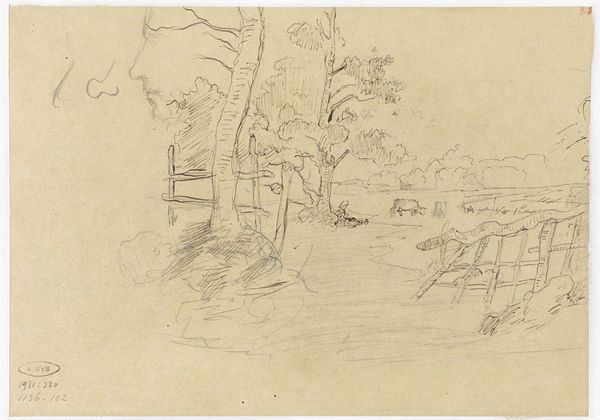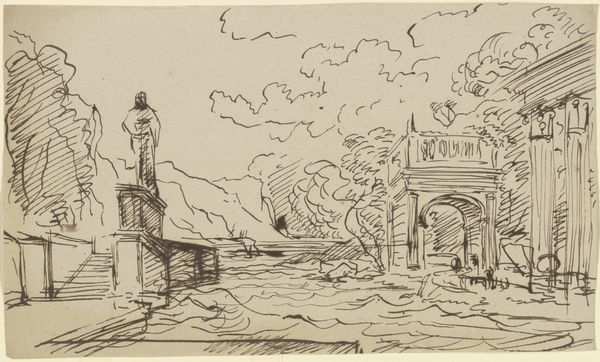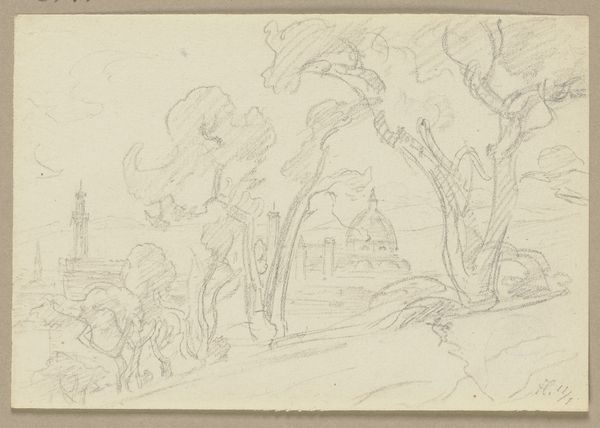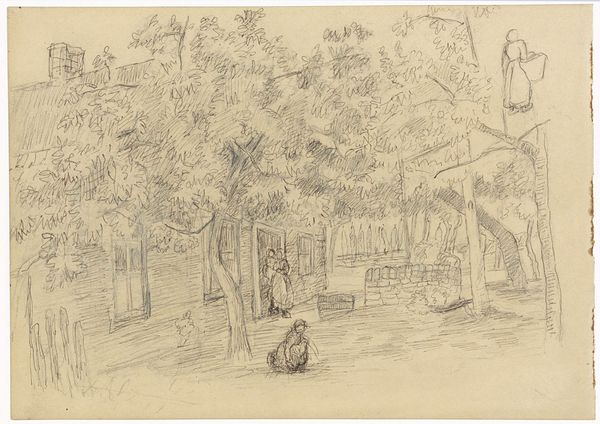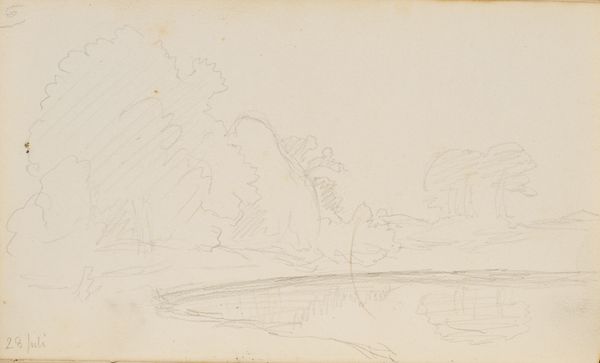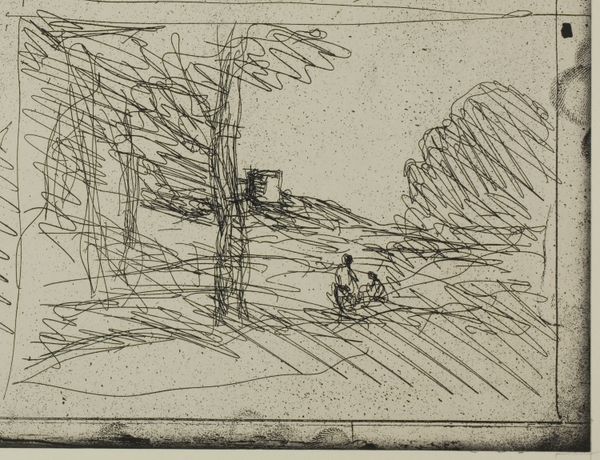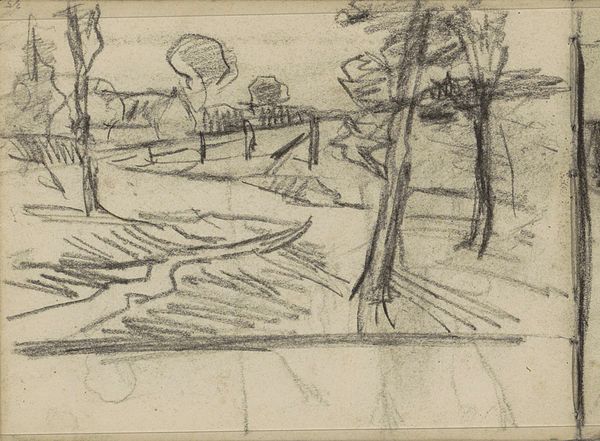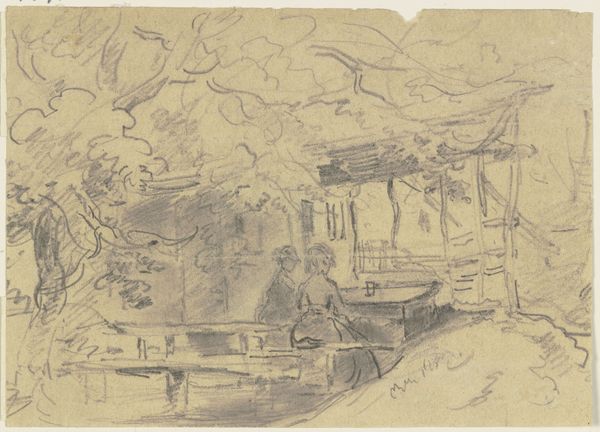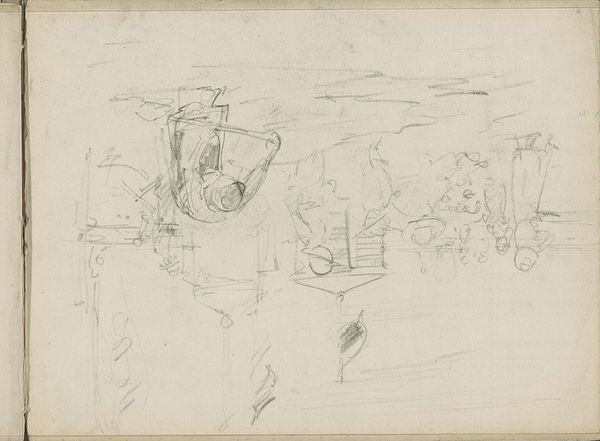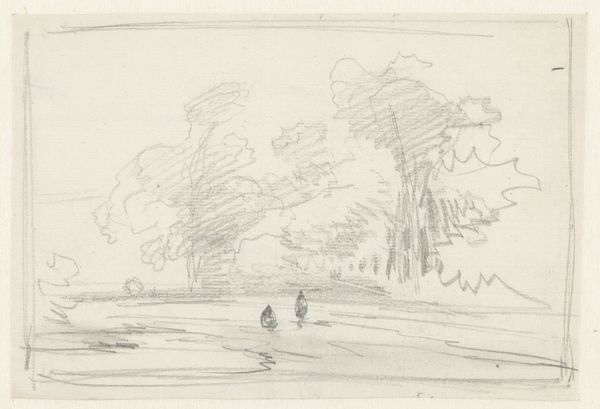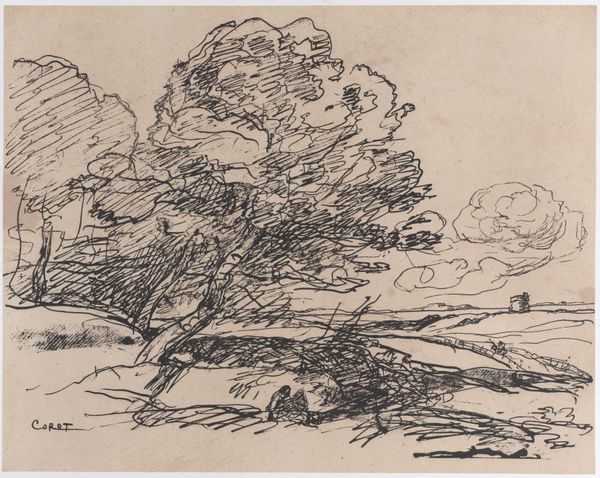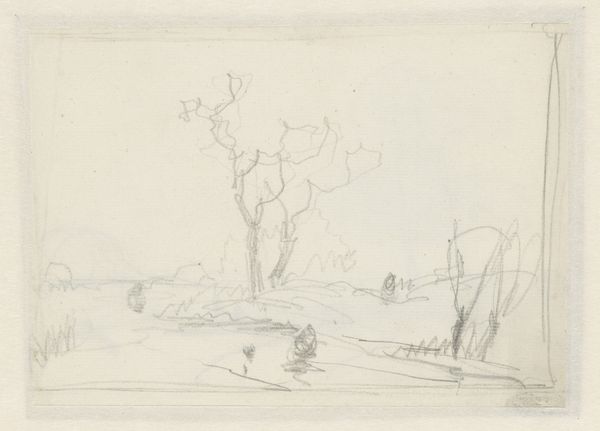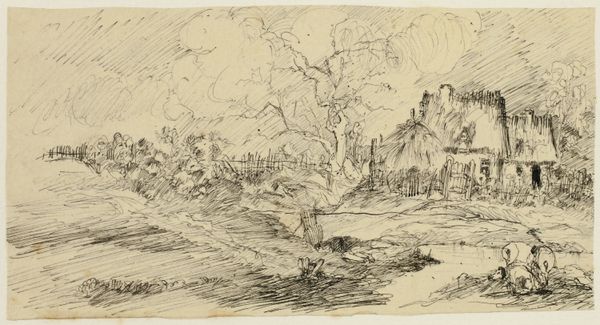
drawing, paper, pencil, graphite
#
drawing
#
16_19th-century
#
pen sketch
#
landscape
#
paper
#
personal sketchbook
#
german
#
sketchwork
#
ink drawing experimentation
#
sketch
#
pen-ink sketch
#
pencil
#
pen work
#
graphite
#
sketchbook drawing
#
storyboard and sketchbook work
#
sketchbook art
#
initial sketch
Copyright: Public Domain
Curator: This sketch, titled "Outdoor Society" by Philipp Rumpf, offers us a glimpse into a 19th-century public scene. It’s held in the Städel Museum collection and is rendered in pencil, graphite, and pen on paper. Editor: My first impression is of organized chaos! The energy is palpable even through the monochrome. It feels less like a formal study and more like a spontaneous moment captured. Curator: Precisely. Rumpf, while not as widely celebrated as some of his contemporaries, played a key role in visualizing everyday life and leisure in Germany. Drawings like this allow us to study changing social practices. Note the clothing of the figures: they indicate class distinctions and access to public space during this era. Editor: Looking at the technique, the visible layering of pencil strokes creates a real sense of depth. It’s interesting to consider the paper itself – a relatively cheap and portable material. Was this drawing preparatory to something larger, or an artwork in its own right? Curator: That’s the question, isn't it? The Städel categorizes it as sketchwork, but its details make it far more than a cursory notation. It speaks to a changing understanding of art, where the sketch, the 'raw' idea, is valued as a potent expression, no less than finished pieces. Editor: And the implied labor is fascinating. The repetitive strokes of the pencil, the pressure applied… These material aspects reflect the artist’s own effort and engagement with the subject, reminding us that art making is a physical activity. It also reflects how available these materials were to middle-class German artists, which increased production. Curator: Yes, and we must think, too, about the role these sketches had in broader society: the rise of illustrated periodicals meant these rapidly sketched scenes could reach larger audiences. There was a demand for capturing these everyday, accessible, leisurely settings. Editor: This definitely complicates traditional ideas of what constitutes ‘high art’. Is this a document, a study, or a finished piece? By looking closely at the materials and the artist’s process, it starts to defy easy categorization. Curator: Absolutely. It reminds us to question established hierarchies of art production and reception. Editor: It also highlights how art's meaning is shaped by the labor involved, revealing art is so much more than solely aesthetics or inherent 'talent'. Curator: Considering both the cultural moment and its physical creation truly opens new avenues for understanding this drawing and similar works. Editor: Agreed. By shifting our perspective, "Outdoor Society" becomes less a passive image and more a reflection of dynamic social forces and working methods.
Comments
No comments
Be the first to comment and join the conversation on the ultimate creative platform.
